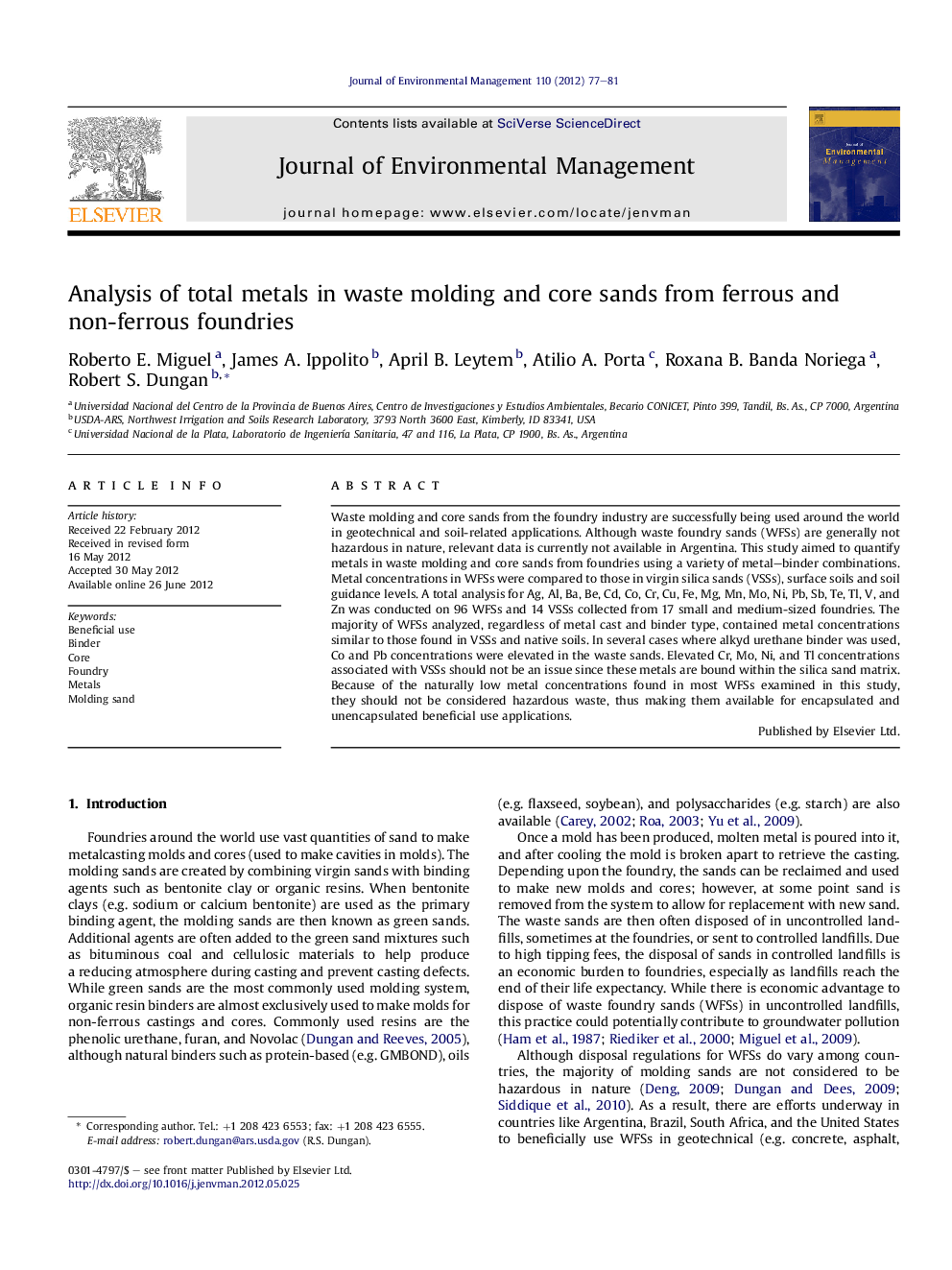| کد مقاله | کد نشریه | سال انتشار | مقاله انگلیسی | نسخه تمام متن |
|---|---|---|---|---|
| 1056508 | 1485302 | 2012 | 5 صفحه PDF | دانلود رایگان |

Waste molding and core sands from the foundry industry are successfully being used around the world in geotechnical and soil-related applications. Although waste foundry sands (WFSs) are generally not hazardous in nature, relevant data is currently not available in Argentina. This study aimed to quantify metals in waste molding and core sands from foundries using a variety of metal–binder combinations. Metal concentrations in WFSs were compared to those in virgin silica sands (VSSs), surface soils and soil guidance levels. A total analysis for Ag, Al, Ba, Be, Cd, Co, Cr, Cu, Fe, Mg, Mn, Mo, Ni, Pb, Sb, Te, Tl, V, and Zn was conducted on 96 WFSs and 14 VSSs collected from 17 small and medium-sized foundries. The majority of WFSs analyzed, regardless of metal cast and binder type, contained metal concentrations similar to those found in VSSs and native soils. In several cases where alkyd urethane binder was used, Co and Pb concentrations were elevated in the waste sands. Elevated Cr, Mo, Ni, and Tl concentrations associated with VSSs should not be an issue since these metals are bound within the silica sand matrix. Because of the naturally low metal concentrations found in most WFSs examined in this study, they should not be considered hazardous waste, thus making them available for encapsulated and unencapsulated beneficial use applications.
► An elemental analysis of waste molding and core sands from foundries was conducted.
► In general, metal concentrations were similar to those in virgin sands and soils.
► Alkyd urethane binders were associated with elevated cobalt and lead concentrations.
► Most waste foundry sands examined should not be considered hazardous waste.
Journal: Journal of Environmental Management - Volume 110, 15 November 2012, Pages 77–81